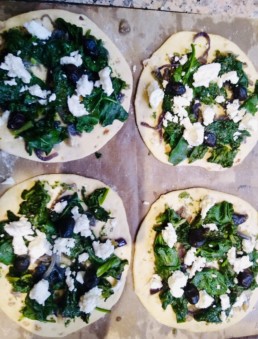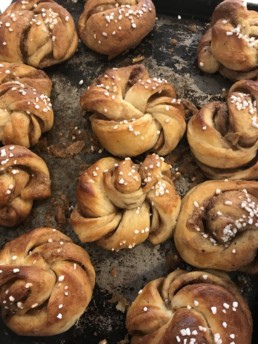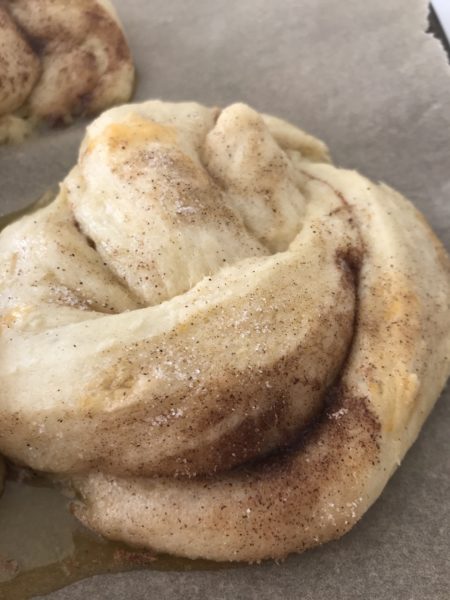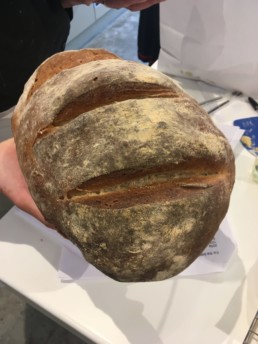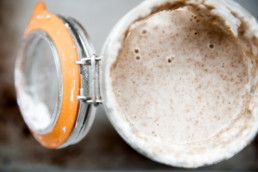What's for Supper - home made pizza
Making pizza is one of the most enjoyable activities you can possibly share with your children and teens, or let them loose on alone.
The only addition needed for pizza to a standard 4-ingredient bread dough is olive oil.
We make a lot of bread for the café and we teach how to in our many bread making classes.
This slightly unusual pizza recipe is from our teaching chef Jackie Hobbs.
Pizzettes – dough enough for 4 x15cm pizzettes
The recipe I have given for the dough can be adapted, depending on what you have available. You can of course use 250g strong white flour and no nuts. I would normally use fresh yeast, but you are more likely to have sachets of fast action yeast in your cupboards. I made the dough in the morning and divided into portions which I then put in the fridge ready to roll out and use in the evening. Coating the dough in oil at this point gives a greater crunch to the crust.
Dough -
100g strong white bread flour
100g semolina flour
50g buckwheat flour
Handful chopped nuts
1tsp salt
1 tsp fast action yeast
130g warm water
2 tbsp oil
Weigh out the dry ingredients in a bowl and then add the wet. Mix until the whole lot comes together in a bowl. Then knead by hand for about 10 minutes or use a dough hook in a food mixer to make an elastic dough which will take about 5 minutes. It should be smooth and springy. Shape into a ball and then put the dough into a clean bowl, cover with clingfilm and leave to prove for about an hour till double in size approximately. Once it has risen, divide the dough into 4 pieces on a floured work surface, shape each into a ball, coat each with a little oil and leave to rise for about 30 minutes if at room temperature. Use a rolling pin to roll out each ball of the dough into a 15cm rounds and place onto a baking tray. Then add your toppings of choice and bake for about 10 minutes at a temperature of 250 degrees centigrade.
Topping Options
You could stick with a traditional topping and spread each dough base with a tomato sauce, followed by mozzarella or spread on a pesto or a simpler herb oil which makes a “lighter” topping. I used a herb oil made from oregano, a little garlic and some sunflower oil. Then topped with caramelised onions, wilted spinach, goat’s cheese and black olives.
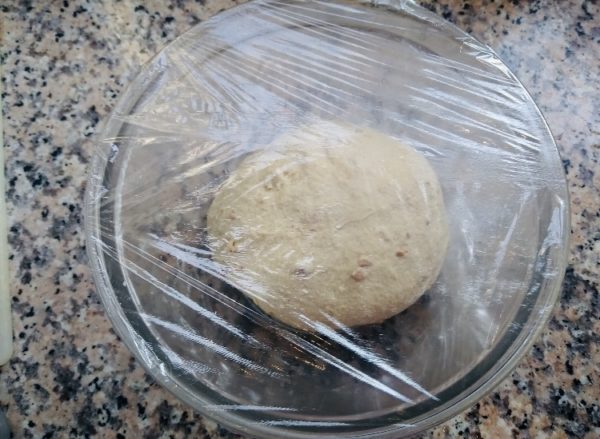
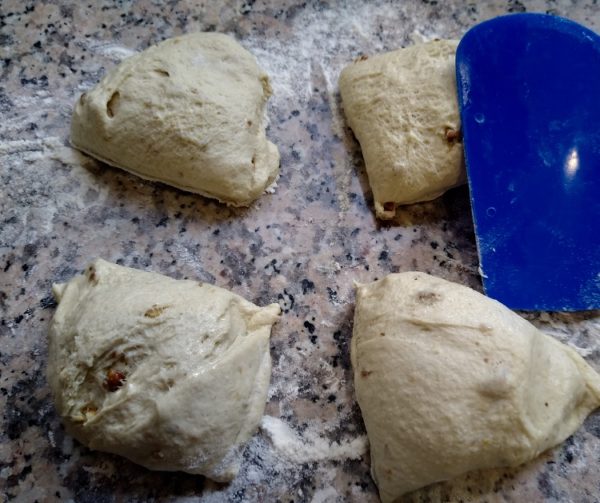
Buon appetito!
What's for supper next:
The big news is that we are re-opening for take-outs this Saturday, the 25th April.
We will offer fresh bread, pastries, filled breakfast rolls, open rye sandwiches, filled Focaccia, salads and our much loved coffee. We will be open 9am-1pm Wednesday through to Sunday with all food presented in take-away boxes and cups. Safe queuing on our large terrace and lawn. Safe distance card payments and plenty of anti septic sprays. We will wear face masks and gloves.
As this means that I will be spending a lot more time preparing food for take away, the recipes will appear a little more sporadically. I will aim for 2-3 per week.
What's for Supper baking special - Swedish cinnamon rolls or "Kanelbullar"
I grew up in Denmark and Sweden, surrounded on the periphery by women who were all brilliant home cooks and bakers. My grandmother and all her sisters had learnt from their mum, Ida in their home in Swedish Lapland, and a couple of them had been sent to "house keeping school" and one trained as a baker and Patissière.
The Kanelbullar, literally meaning cinnamon buns, which we bake daily for the café and teach in our Bread making for Beginners class are without a doubt our signature bake. People come just for them, and often buy more to take home. The recipe is a fairly standard sweet, yeast risen dough so there is egg, butter and milk in the dough, making it soft and marshmallowy, and there is more butter and sugar as a filling, as well as cinnamon and cardamom.
We always use fresh yeast in the school and café but dried works well too.
I recommend Quick action yeast over the granules which need sponging.
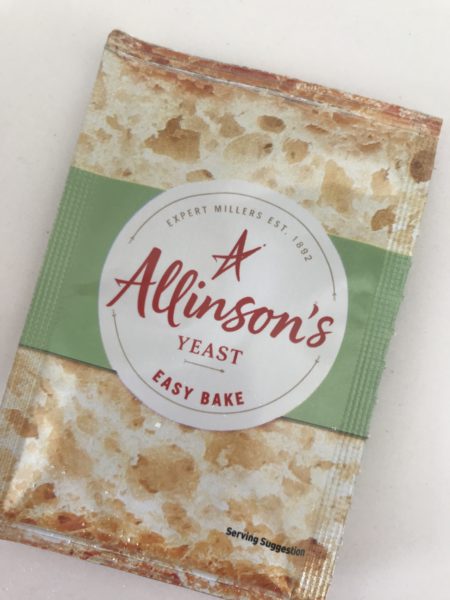
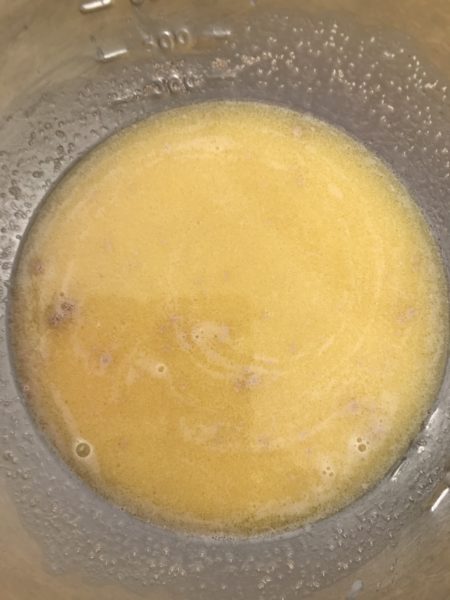
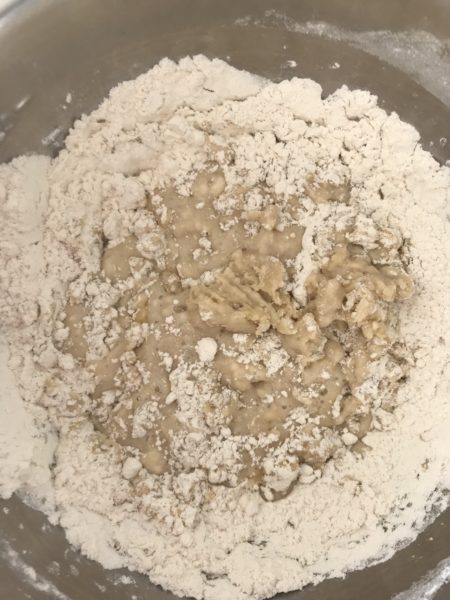
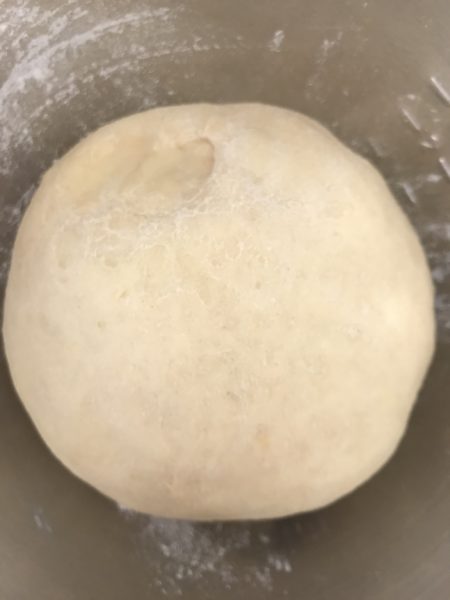
Yeast Melted butter+milk Flour+salt+sugar Risen dough
Cinnamon buns - small batch making 6 large cinnamon buns
12g fresh/3.5g quick action yeast (half a sachet)
50g butter
125ml milk
1/2 egg - mainly yolk if you can manage to control it
40g caster sugar
A large pinch of salt
1 teaspoon ground cardamom
250g plain flour
Filling:
40g soft, unsalted butter
25g caster sugar
1 tablespoons ground cinnamon
To top before baking:
1/2 egg, lightly beaten with a fork
Confectioner's sugar or normal sugar mixed with a little ground cardamom
- Melt the butter, add the milk and bring to luke-warm temperature.
- Pour it into the dry ingredients, add half or your half egg!
- Stir using a wooden spoon or dough paddle. Work it as best you can but it will be a very wet dough. Cover and leave to rise for 30 minutes.
- Mix the ingredients for the filling.
- Tip the dough out on a lightly floured work surface. Dust lightly with flour. Roll out to a strip of 8 x 15cm or so.
- Spread the filling over the dough. Fold over lengthways to a narrow long strip
- Cut into 2 cm wide strips. Twist the strips to and bring it around itself to form a lovely knot shape where you bring one end up through the open centre to secure the know., Place on baking parchment-covered baking sheets or in paper cases. Leave to prove for 45 minutes. The buns should have doubled in size and be slack and soft.
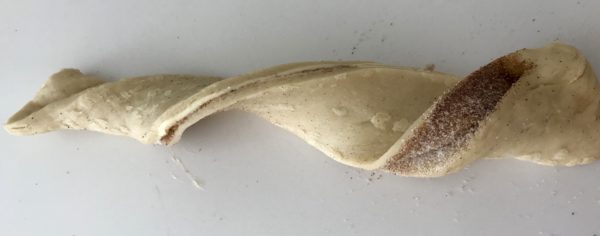
Brush with egg and sprinkle with confectioner’s sugar (or caster sugar mixed with ground cardamom). Place in the top third of a pre-heated oven and bake for 9-10 minutes or until golden
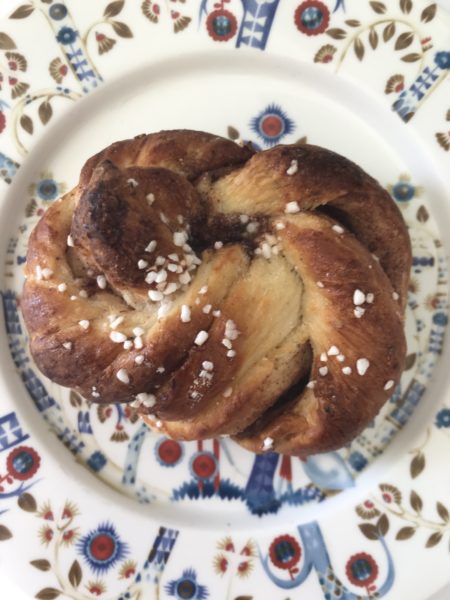
Enjoy with your cup of morning coffee...and eat them all today, or freeze. Fresh home baked bread goes stale very quickly.
What's for Supper tomorrow...
Back to Italy for one of my all-time favourite dishes; Saltimbocca alla Romana. Effortless elegance - thin escalopes of veal, chicken or fillet of pork, Prosciutto, sage and that favourite ingredient of mine: Marsala! What's not to like...
What's for Supper Easter special: Hot Cross Buns
Hot Cross Buns
This recipe comes from our chef and artisan baker Clare Bermingham. Clare, like the rest of us here at the Cookery School, trained at Leiths but then also went on to train as a baker with Le Cordon Bleu.
If you have attended one of the bread classes run by Clare, either alone or with your child as part of our many popular Parent & Child classes, you will know what an amazing baker she is. Watching Clare knead, shape and touch dough tends to have a transfixing, and ultimately, life transforming effect on those who attend!
As we are aware that freezer space may be limited at the moment, Clare has offered a relatively small quantity, making 6 buns. Obviously if you would like to make a dozen, simply double the recipe!
For the dough
200g strong bread flour
50g wholemeal flour
5g salt
3.5g (1/2 sachet) quick action yeast, or 10g fresh yeast, if you have it
110g full fat milk, heated to just about lukewarm
25g mixed peel (or cranberries)
100g raisins or sultanas
1 teaspoons ground cinnamon
1/2 teaspoon ground cloves
1/4 teaspoon ground allspice
1/2 teaspoon ground or freshly grated nutmeg
1 medium egg
25g soft butter
20g runny honey, or golden syrup
For the crosses
Mix equal quantities flour and water, to form a fairly thick paste, then add a little caster sugar
For the glaze
Warmed and sieved apricot jam
- In a bowl, combine the flours, spices and salt.
- Dissolve the quick action yeast in the luke-warm milk, add the egg, butter and honey
- Add the dry ingredients to the wet.
- Mix to form a dough, then tip out onto your work surface and knead for about 10 minutes using the base of your palm, pushing dough away from you to stretch it, then fold it back on itself. Repeat. The stretching creates gluten, the folding helps to trap air for the yeast to work in.
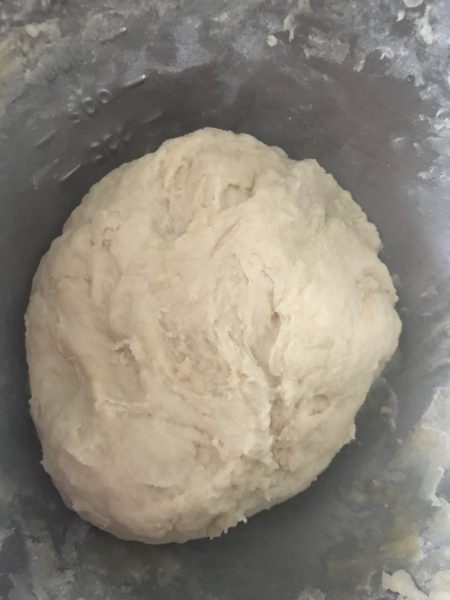 You will see how the dough changes from "ropey" and ragged, as above, to looking glossy and smooth. To find out if you have kneaded enough to create the gluten needed for good bread, do a "gluten window" test as shown in the little clip here. You should be able to stretch a thin membrane without the dough breaking. If it breaks up, knead for another 30-60 seconds - it can be that quick. Gluten is made by mixing flour and a liquid and then stretching and manipulating it and creating molecular gluten strands to give the buns their lovely texture.
You will see how the dough changes from "ropey" and ragged, as above, to looking glossy and smooth. To find out if you have kneaded enough to create the gluten needed for good bread, do a "gluten window" test as shown in the little clip here. You should be able to stretch a thin membrane without the dough breaking. If it breaks up, knead for another 30-60 seconds - it can be that quick. Gluten is made by mixing flour and a liquid and then stretching and manipulating it and creating molecular gluten strands to give the buns their lovely texture. - Leave to rise for an hour, covered by a clean tea towel and away from draughts.
- When the dough has doubled in size, add the raisins and mixed peel and re-knead.
- Divide into 6 equal parts, and shape into little buns. See Bread roll blog for shaping technique.
- Place on a baking tray, if you like, so close that they are lightly touching and will need to be gently prized apart once baked.
- Prove for at least one hour.
- Meanwhile, set the oven to 190C. Mix the flour, water and sugar. Spoon into a piping or plastic bag, and pipe out over all the buns, so they are all "crossed".
- Bake for 20 minutes, or until golden brown.
- While still warm, brush liberally with the apricot glaze and leave to cool on the rack.
What's for Supper Weekend Bread Special 3: how to make a sour dough loaf
Our bread making classes remain the most rewarding classes to run for me and my team of Leiths and Cordon Bleu trained teaching chefs. For so many of our attending guests, they are life changing. The Beginners Bread class was the very first class that I designed back in 2009, out of our now 40 odd categories of classes. As an artisan baker, my heart and soul is in bread making in a way which it simply isn't when it comes to cakes or desserts.
If you have followed my instructions on how to make a starter and you are now the proud owner of a lively, bubbling, healthy looking starter ready to become the first of many sour dough based loaves, congratulations! Let's get baking.
Just to recap, we created a starter from 3 x 90g flour/100g water so the starter consists of 270g flour and 300g water. A total weight of 570g. I start each baking session by feeding my starter one of its 90g flour and 100g water just to give it a boost. Leave it on your kitchen work top, ie in room temperature.
After 3 hours or so, you should see a "doming" on the surface of the starter - this indicates that the starter is at its most active state and ready to start baking with.
To make a modestly sized loaf, measure out 200g of starter, of which 94.5g is flour and 105g water.
Now feed the remaining starter another portion of 90g flour and 100ml water, and leave it out for an hour or two to revive it, then introduce it to its new home: the fridge. The importance of temperature on sour dough is the first thing for any successful baker to understand. I will come back to this, but now, let's focus on making a loaf.
Add to your 200g starter 300g flour and 200g water. This brings the total amount of flour in the dough to 395g and the total of water to 305g. This means a hydration level of 77%. Hydration - ie how much water to flour - is something most bakers of sour dough will discuss and compare - to the point where it often becomes rather competitive - the wetter the dough, the more impressive! Your dough should be loose and sloppy, but not runny.
ONE MEDIUM SOUR DOUGH
200g sour dough starter
300g strong white flour or a mix of 200g white and 100g rye
200g water
7g fine sea salt
- Mix and knead until stretchy and elastic. You will struggle at first to knead such a wet dough. Use a plastic dough scraper if you have one, to lift and slap down the dough. Work it, to develop gluten, for about 8-10 minutes. Tip into a lightly oiled, large plastic bag and leave to rise in the fridge over night.
- The next morning, tip out the dough, give it a little knead and flatten out slightly, then fold in towards its centre. Repeat this, striving to create surface tension by pulling the "skin" of the dough into the fold, making a tight ball. Think of tucking hair under a swimming cap or imagine you had cling film around the dough and you are trying to putt that in to tighten. The more taut the "skin" of the shaped bread is, the more likely it is to keep its shape when baking and not shoot out odd looking bubbles on the side.
 Tip, seam side up, into a floured proving basket if you happen to have a proving basket. If you don't, just place it on a floured baking sheet.
Tip, seam side up, into a floured proving basket if you happen to have a proving basket. If you don't, just place it on a floured baking sheet.- Drape a clean tea towel loosely over the loaf and leave to prove for 2-3 hours.
- Heat oven to 210C, with an empty roasting tray at the base of the oven.
- If you have been proving in a basket, gently tip out the dough on a floured baking sheet. If your dough is already on a floured baking sheet you are ready to score it with a sharp knife - or use scissors to snip into it. This will also help the bread to keep its shape when baking.
- Tip a glass of cold water into the hot roasting tray at the bottom of your oven, to create steam and encourage crust and a quick setting of the bread's shape, and then put the bread in. This can be omitted as there is no risk your loaf won't have a good crust on it.
- Bake for 45 minutes or until hollow sounding when tapped on the bottom.
- If you wish you can of course double the quantity of dough to make a larger loaf and if so, bake it for at least an hour, perhaps a little longer.
- Leave the loaf to cool down before cutting into it to give
Understanding the importance of Temperature
When not in use, a starter needs to be kept in a sealed container in the fridge. While in a cold temperature, a wild yeast starter will be dormant - think of it as being in a state of hibernation - and will revert to looking “flat” and lifeless just like your original mixture before yeast developed. To revive it for baking, bring it to room temperature, feed it and leave it for a couple of hours to become active and healthy. If you bake every day, the starter can be kept in a cool room temperature as it will be constantly used and revived. What a wild yeast starter can’t survive is being left in an ambient temperature for a long periods of time without being fed fresh flour and water. This will result in the "bad" bacteria winning the war over the good ones, and the starter will start to smell very strongly acidic and vinegary and will eventually succumb - the bad bacteria will have won the battle over the good ones. With patient, constant feeding at regular 2-4 hour intervals, you should be able to nurse your poorly starter back to health. To maintain a healthy starter, feed it weekly by bringing it to room temperature, decanting off a little, then feeding it fresh water and flour and returning it to the fridge once revived.
Sour dough fans have been known to bring their starter out with them in the garden – sitting quietly under a rose bush or on a garden table, meeting new, incoming yeast spores. Looking after sour dough is a nurturing process. Look after your sour dough, feed it, refresh it and use it regularly, and you will be rewarded by exceptional bread.
What's for Supper Weekend Bread Special 2: breakfast milk rolls
Our bread making classes remain the most rewarding classes to run for me and my team of Leiths and Cordon Bleu trained teaching chefs. For so many of our attending guests, they are life changing. The Beginners Bread class was the very first class that I designed back in 2009, out of our now 40 odd categories of classes. As an artisan baker, my heart and soul is in bread making in a way which it simply isn't when it comes to cakes or desserts.
Having freshly baked bread for breakfast is such a joy. These little milk rolls are quick to mix and bake, and require the usual hour or so to rise. When milk and perhaps a little butter is added to a dough, rather than just water and perhaps a little oil, the resulting bread will be light, soft and fluffy. No crust, just pillowy loveliness.
My freezer is pretty full at the moment, so I bake in small batches. That way all rolls can be enjoyed while still slightly warm, with lashings of butter and I also very much enjoy starting my day with baking. You can easily double the quantities. Halving what is already a small batch would not work so well.
6 rolls
20g fresh yeast or 5g quick action dry yeast (just under one full sachet)
30g melted butter
175ml milk
1 heaped tablespoon caster sugar
1 teaspoon sea salt
300g flour - strong, plain or a mix of the two. Using 1/3 rye, but no more, works really well.
If you are using quick action yeast it can go straight into the flour dry, as long as your liquid is a little warmer than tepid.
Start by melting the butter - in a saucepan, the old fashioned way, or in a microwave.
Add the milk, stir/heat until just a tad warmer than you are. About 38C.
Place the yeast, fresh or dried, in a mixing bowl.
Pour over the warmish buttery milk. Stir to dissolve the yeast as you do so.
Add sugar and salt, followed by the flour.
Stir in, and when all the flour is added, sprinkle a little more on the dough in the bowl, put your wooden spoon away, stick your hand in, and knead. Turn out on a very sparesely floured work surface and knead and fold the dough. Knead using the base of your palm, pushing dough away from you to stretch it, then fold it back on itself. Repeat.
The stretching creates gluten, the folding helps to trap air for the yeast to work in.

Knead like this for 4-5 minutes. You will see how the dough changes from "ropey" and ragged, as above, to looking glossy and smooth. To find out if you have kneaded enough to create the gluten needed for good bread, do a "gluten window" test as shown in the little clip below. You should be able to stretch a thin membrane without the dough breaking. If it breaks up, knead for another 30-60 seconds - it can be that quick. Gluten is made by mixing flour and a liquid and then stretching and manipulating it. Long molecular gluten strands to give the bread its lovely texture are created and that's what you want.
Rinse out the bowl, or grab a new clean one, sprinkle a little flour in the base and drop the dough in. Cover with a clean tea towel or some cling film. Leave for about an hour to rise, in a sunny spot on your work top. The dough should now look beautifully domed as below.
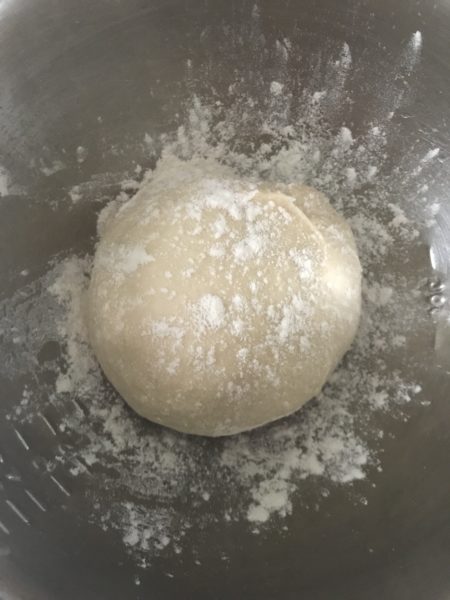
Tip out the dough. It will feel very light and tender. Give it a few gentle folds, then shape again and cut into 6 or 7 equal pieces. Shape each into roll.
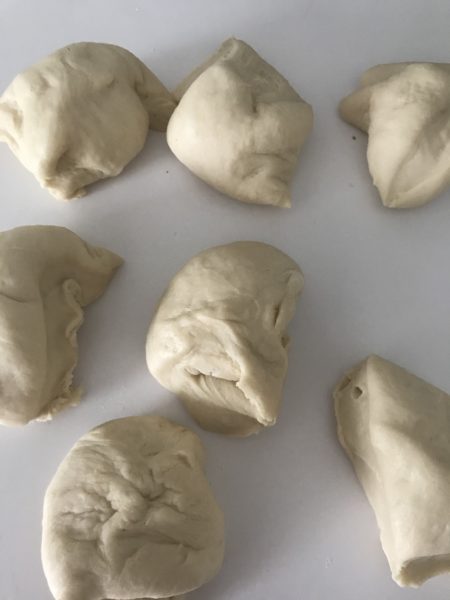

Switch your oven to 210C. Dust your rolls with a little flour, or brush with a little milk.
Leave them somewhere warmish, say in a sunny spot in your kitchen, no warmer, to prove while your oven comes up to temperature.
Bake in the middle of the oven for about 13-14 minutes.
Baked bread will sound hollow when you give it a little tap on the bottom, as it were.
Leave to cool down a little before devouring but don't leave for long as fresh bread starts to go stale the minute it comes out of the oven. I like topping my rolls with some nice, nutty hard cheese like Gruyère and a dollop of black currant jam, the Scandi way. Sounds odd? Try it.
What's for Supper Weekend Bread Special 1: making a sour dough starter
Our bread making classes remain the most rewarding classes to run for me and my team of Leiths and Cordon Bleu trained teaching chefs. For so many of our attending guests, they are life changing. The Beginners Bread class was the very first class that I designed back in 2009, out of our now 40 odd categories of classes. As an artisan baker, my heart and soul is in bread making in a way which it simply isn't when it comes to cakes or desserts.
Quite a few of you have got in touch with questions relating to the lack of flour and keeping sour dough starters alive and well. Sour dough is, as those who bake it know, in a category of its own. Working with natural yeasts and ferments is so very different from baking bread with commercial yeast. But now is the time to try our hands at something different, and I thought I would create a post about how to create a sour dough starter.
A starter is made simply from strong organic flour and water, in more or less equal quantity. I usually work with a starter which consists of 90g flour to 100g water. We keep litres of it in our kitchen at the school but at home you probably don't wan't to store more than 500g. Organic flour is important to ensure that there are no chemicals inhibiting the natural yeast bacteria in the flour.
These were my pots of starter during the 3-day creating process earlier this week.
The images don't convey the change in texture that you should expect, so here is a little film to show consistency
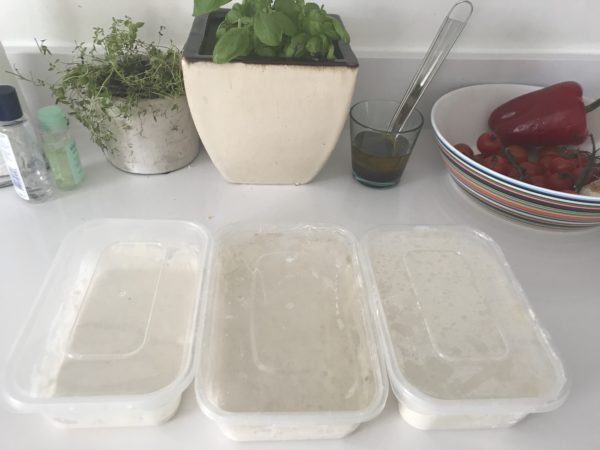
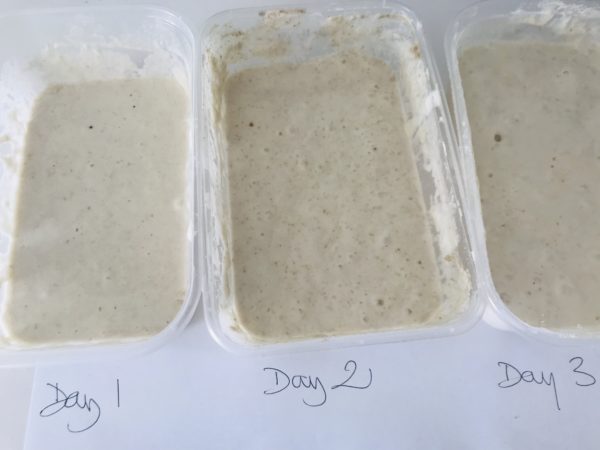
Day 1: 90g strong organic flour/100g water - creates a dense, flat gloop
Day 2: 90g strong organic flour/100g water - starting to develop air bubbles
Day 3: 90g strong organic flour/100g water - plenty of action, lots of air bubbles
Leave this on the kitchen work top - or outside, to capture local wild yeast spores in the air over the course of the 72 hours. To encourage yeast development when you first make a starter, you could add a few dried raisins or a little honey. Once the starter is healthy, it should be kept in the fridge. If left on the counter top in a warm kitchen, the fermentation will carry on and tip the balance of bacteria until it becomes a black, stinking mass. That requires emergency measures.
When I am getting ready to create a dough, I feed my starter again and leave it on my work top, in the warmth of my kitchen, to ensure it is at its most potent. Usually that will take about 90 minutes to 2 hours. This is what it should look like STARTER READY TO WORK WITH
If you have a starter already but have run out of strong and/or organic bread flour, you can feed your starter any flour, just to keep it alive and healthy. A plain flour won't have the gluten content required for making a good, structural bread, but it will sustain your starter until you can get hold of strong flour. Non-organic flour will have very little natural yeast spores left in it but you can help it along by placing the starter outdoors. You can use rye, 00 flour, plain, wholemeal, seeded, brown, spelt - anything but self rising. I know it's obvious but I will point it out anyway; self rising contains dry commercial yeast and it would kill off your wild ferment. A sour dough starter fed mainly on plain, or other less glutenous flours over a period of time can still be used to bake with. Try making milk rolls - recipe coming tomorrow - or enriched dough for cinnamon buns, hot cross buns etc where you are not aiming for a rustic loaf, but softer types of rolls and baked goods.
